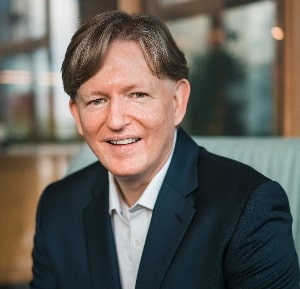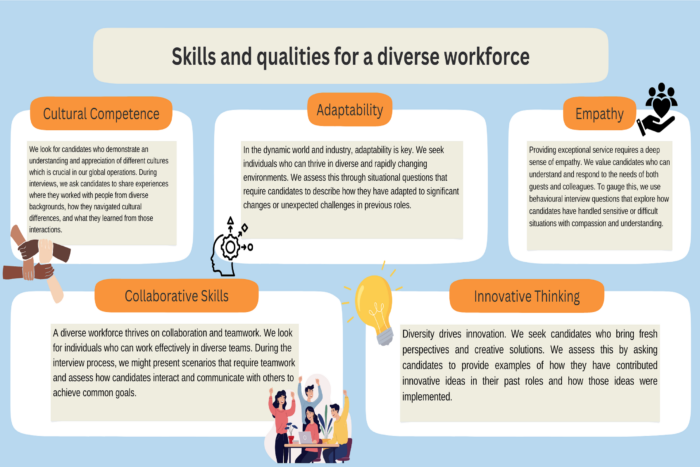Diversity is not just a talking point at Marriott International; it is the secret sauce that fuels its success. Here, cultures collide not just in the bustling lobbies but also behind the scenes. Teams not only work together; they celebrate the strengths each person brings to the table.
Speaking with HRM Asia, Andrew Newmark, chief HR officer, Asia-Pacific excluding China, at Marriott International, unveiled the secret.
“Our commitment to DE&I is evident in our global people branding ‘Be,’ ” he explains. This campaign embodies the company’s approach through three key pillars: begin, belong and become. These pillars are designed to guide associates from their onboarding journey through their career progression, ensuring they feel valued and supported at every stage.”
He continued, “Throughout the journey, our associates have the opportunity to explore diverse roles in the hospitality industry and access the tools needed for professional and personal growth.”
With 95,000 associates in its region, the team leverages various technologies “to communicate and promote job opportunities and offer foundational learning programs, addressing diverse needs and promoting continuous development for associates at all levels and backgrounds.”
See also: Marriott’s CHRO makes employee wellbeing the company’s cornerstone
This dedication to DE&I shines through action, Newmark says. Job postings, for example, promote the company’s inclusive culture, welcoming people from all walks of life, Newmark says. For instance, they focus on the company’s commitment to equal opportunity and ongoing support for people with disabilities, refugees, senior citizens and returning parents.
“This inclusive approach positions Marriott as a top choice for talent-seeking employers who value DE&I,” he says.
Marriott’s collaboration with external community organizations and partners further amplifies its DE&I efforts, he says. In South Asia, for instance, Marriott partnered with the Sarthak Education Trust and the Helen Keller Foundation to improve the recruitment, onboarding and support for hiring associates with disabilities. According to Newmark, this initiative led to a 180% increase in the disability inclusion workforce by the end of 2023.
“In Australia, we started our collaboration with the Australian Disability Network’s Employing 100 program last year,” he adds. “The results have been encouraging, showcasing practices that make employment more accessible for people with disabilities.”
Central to Marriott’s inclusive culture are its Associate Resource Groups (ARGs), which support diverse communities within the organization, including women and the LGBTQ community. These groups create a sense of belonging and allow associates to celebrate their background while contributing to their communities.

Meanwhile, its “philosophy of growing great leaders at all levels” is brought to life through foundational leadership development programs, which Newmark says “build the skill set leaders need to create an environment of collaboration, trust, respect, opportunity and inclusion.” Inclusion is also embedded throughout Marriott’s talent development programs and leadership accelerators.
“By integrating DE&I into every aspect of our operations, Marriott not only attracts top talent from underrepresented groups but also creates an environment where all associates can thrive,” he says.
Boosting DE&I-related skills and qualities
With nearly 8,700 hotel properties globally, Marriott recognizes that a diverse workforce is not just about demographics. Newmark emphasizes that Marriott prioritizes a range of skills and qualities that are particularly enhanced by a diverse workforce, aligning with the organization’s core values of putting people first, pursuing excellence and embracing change. He outlined how Marriott assesses candidates based on these skills and qualities.
“In addition to these qualities, we use a combination of structured interviews and assessments to evaluate candidates,” he says. This creates a comprehensive approach that ensures the organization identifies those with the right experience and skills but also who “embody the inclusive and collaborative spirit that drives Marriott International’s success.”
“By prioritizing these qualities,” he adds, “we ensure that our workforce continues to reflect the diverse and dynamic world we serve, fostering an environment where innovation and excellence thrive.”
However, unconscious bias can be a hurdle in any recruitment process. To combat this, Marriott utilizes bias awareness training for managers and executives and enhanced recruitment processes to ensure fairer hiring measures across the board. Furthermore, the organization’s board-level Inclusion and Social Impact Committee oversees its global approach to associate inclusion, culture and other ESG-related matters, ensuring continuous progress and accountability.
READ MORE: Creating a great place to work with a people-first workplace culture
Newmark advises HR leaders aiming to build a more diverse talent pipeline to recognize that DE&I is a continuous journey that must start from the top. He emphasizes the importance of understanding the unique needs of associates and embedding DE&I principles across all business functions.
“Explore new talent pools, develop inclusive leadership and integrate DE&I across all business functions,” Newmark concludes. “By implementing these strategies, you can create a more inclusive and diverse workforce that drives innovation and excellence.”
Josephine Tan wrote this story for HRM Asia. Find more from this author at HRMAsia.com.




